Why we need civic engagement

March 31
By Alan Jaffe
For PlanPhilly
Over the last 18 months, the city has had a case of “civic engagement” fever. The symptoms are a rash of Sharpie-wielding facilitators, an outbreak of breakout groups, a yen for cold cuts and cookies, and contagious debates on the future of Philadelphia.
• PennPraxis asked communities to rethink what can be done on the Central Delaware Riverfront.
• Great Expectations sessions were organized by The Inquirer to figure out how to make us the next great city.
• Multiple city agencies and organizations led Green Plan discussions on how to improve the environment.
• The City Planning Commission set up a circuit of Imagine Philadelphia roundtables as the first phase in drawing up a new comprehensive plan.
And there are more requests for your presence coming down the pike. Anyone with a mind to share an opinion has had a choice of soapboxes and a variety of willing ears.
But what is behind the recent spate of invitations and concern for public input? Just how much longer will people show up before they sink into civic engagement fatigue? And why does the city seem so damned democratic lately?
Athens, Rome, Philadelphia
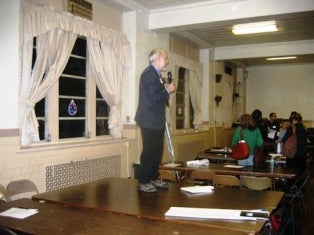
Coordinating the civic engagement programs for both Great Expectations and PennPraxis has been Harris Sokoloff, director of the Center for School Study Councils at the University of Pennsylvania. Sokoloff traces the framework of that work to the senates of Athens and Rome.
“In every decision-making process we have where people come together in some sort of equal terms, we use some form of deliberative model,” going back to those early republics. “The tools we’re using are different; the ideas are still the same. It’s still a matter of: people get together, find a way to identify the issues, what the pros and cons are, the different ways of understanding the issues and the different forms of action, and use that in the decision-making.”
As in ancient Rome, “power politics” always play a part, Sokoloff adds, but there are ways to keep the process transparent and the public an important partner.
Beverly A. Harper traces her involvement in modern civic engagement to the early 1970s. Harper is founder, president and CEO of Portfolio Associates Inc., the agency that managed the series of Imagine Philadelphia meetings held in neighborhoods around the city over the winter.
Back in the ‘70s, Portfolio Associates conducted a study for the Pennsylvania Department of Transportation that examined how and where citizens could become involved in the transportation planning process. The agency surveyed the 50 state transportation departments around the country, then took an in-depth look at four departments’ experiences with civic engagement.
“We found that in the Boston area there was almost a billion dollars in projects that had been stopped because of public involvement,” which occurred at “a very late stage in the projects,” Harper said.
“Involving the public early in a realistic way – and realistic means letting them know all of the different factors that will go into the decision-making – does help a project have a smoother development,” she said. “If you involve them early enough and know the kinds of issues and concerns that they have, you can do things to mitigate some of those concerns.”
Civic involvement programs continued into the 1980s, according to Harper, then trailed off for the next 10 years or so. The resurgence in Philadelphia is the result of several factors, she said.
“I think that part of it has to do with federal guidelines related to the National Environmental Policy Act,” the 1970 measure that required federal agencies to prepare Environmental Impact Statements before taking action and then sharing the information with the public. “Many government-funded projects and public agencies use those guidelines to identify the projects where they need engagement,” Harper explained.
Another reason for greater public involvement is governments’ limited funds and resources, she continued. “So one of the ways to help identify what should be done, and how it should be done, is by engaging citizens.”
The third factor is increased sophistication on the part of the citizenry, Harper believes. “Thanks in part to the Internet, they can find out what’s going on. When there are things they don’t like, they know how to get involved and who they should be contacting.”
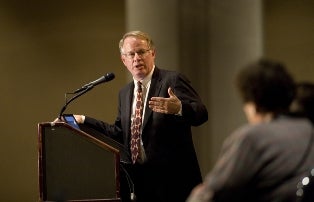
Sokoloff’s plunge into the deep end of civic engagement came in 1995, in partnership with Inquirer editorial page editor Chris Satullo. Each year Sokoloff and Satullo took on a new topic that included civic engagement initiatives, from national to local issues, on everything from health care to the needs of a particular school building.
Over the past year, their collaboration on Great Expectations was part of a larger effort, the Penn Project for Civic Engagement, which also included the Delaware waterfront project led by PennPraxis executive director Harris Steinberg. Sokoloff, Satullo and Steinberg had worked together four years before on the attempt to find a developer and the right development for Penn’s Landing.
Sokoloff said the civic trend is due to the realization on the part of government leaders and agencies that “those who must be involved in supporting or solving a problem or challenge ought to be involved in naming and framing the problem, and in helping to find a solution.”
Newark Mayor Cory Booker, for example, recently acknowledged that he can’t do anything without the support and involvement of other people, Sokoloff said.
“The leaders can no longer say ‘do this’ and it happens,” he said. “Issues are too complex; the solutions are too complex. Everything requires adaptation. …It requires a different kind of citizen involvement and engagement, and that’s why you’re seeing all these community forums.”
The Right Model
There are many models for conducting civic engagement, Sokoloff said, and he doesn’t claim to have the best one, “though we try to make it better and are constantly revising it.”
In too many cases, the process takes the form of an expert- or advocate-driven discussion. “An expert gets up in the front of the room, makes a presentation, and has a question-and-answer period. Or there may be a group of people who have developed an agenda and all they want to happen is for all the people to bless the agenda,” he said.
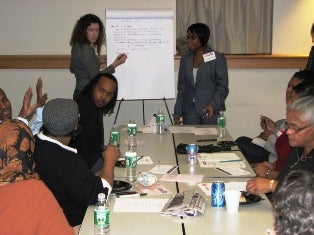
Liz Gabor, a real estate manager at the Philadelphia Industrial Development Corporation, was a participant in two civic engagement efforts in recent months. The Imagine Philadelphia session, she said, was an “organic” interchange in which neighbors were asked to brainstorm solutions to city problems. “People were imaginative and came up with very good ideas.”
But Gabor said her experience in the Great Expectations did not seem as productive. “We were told, ‘read this report and comment on it.’ It was too guided.”
Another participant in both the Imagine Philadelphia and Great Expectations sessions found them equally constructive. “I heard similar comments at each meeting and a consistency in what people were saying,” said Jo Ann Desper, a senior consultant for a healthcare services company. “They were both good, open forums.”
Public involvement means more than meetings at which participants offer opinions and possible solutions, Harper said. “That is one tool that you can use to get reaction and input. There are lots of others that can be used,” including surveys, focus groups, and online interaction.
The Delaware Valley Regional Planning Commission is in the midst of a public outreach effort for its long-range strategy, entitled “Connections – The Regional Plan for a Sustainable Future.” An online survey is underway through the end of March that will help refine planning in the areas of transportation, land use, economic development and the environment. The survey will be followed by planning exercises, focus groups and public workshops.
The public meetings have dimensions beyond surveys, Harper said. They serve as an educational tool that shows participants how the next person thinks, and they provide “directly and subtly an empathy and understanding of the position that the agency or organization has in trying to come up with a plan, knowing that everyone is not going to be of one mind.”
Those differing views are a vital component of civic engagement. A diverse group of participants is a primary goal in calling the meetings. “I was very pleased with the diversity of the Imagine Philadelphia sessions,” Harper said. “It was diverse in lots of different ways. The meeting in West Philadelphia had lots of young people, and I thought that was terrific. In the Northeast, there were lots of Eastern Europeans, but they were from different ethnic groups. I’m very happy with the cross-section we achieved” over the course of the nine citywide meetings.
Sokoloff also seeks a diverse group of participants. “The idea is always to make the group as inclusive as possible – by gender, ethnicity, race, and different levels of expertise,” he said. “The more diversity, the richer the conversation.”
While different viewpoints are sought, the civic engagement sessions organized for Penn’s design department or the meetings for the City Planning Commission did not specifically invite developers to the table.
But they would not have been turned away, either. “For Imagine Philadelphia, we wanted to hear from ordinary citizens,” Harper said. Developers may have attended, but they would have probably been there in their roles as residents. “The only people we explicitly invited by letter were elected officials.”
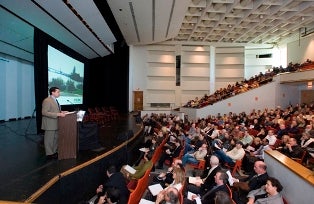
In the Central Delaware engagement process, separate meetings were held with developers to gather their input and expertise. “That’s where you say, ‘We’re going to have a closed session with developers.’ And when you do that, you let people know you’re doing it,” Sokoloff said. “It is a matter of transparency, but I like to think beyond transparency to co-production – the idea of experts working with citizens.”
Too Much of a Good Thing?
Even an engaged citizen may need to rest his voice occasionally. To prevent civic exhaustion, Harper suggests more collaboration among agencies. Portfolio Associates is currently undertaking public research into two projects – one looking at ways to ease traffic congestion on the west side of the Ben Franklin Bridge and the other exploring an extension of the PATCO line along the waterfront – with a combined questionnaire and meetings that will ask stakeholders about both issues.
“This is to recognize that people’s time is valuable. I think we need to do a little bit more of that,” she said. “So that you’re not asking the public to come out too many times.”
A more serious problem arises when organizers of civic engagement create “unrealistic expectations about how much say people will have in a project. I think it’s something you have to repeat early and often – that this is just one of the factors you use in the decision-making process,” Harper emphasized. “I think it is incumbent upon organizations who are managing this process to be truthful with people about what their involvement is going to mean.”
There must be an implementation mechanism in place, she said, to show participants their input had a result. If there is no implementation, “I think that hurts other efforts,” she said.
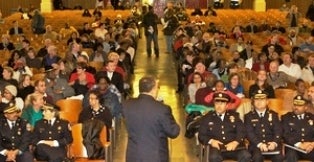
The new Philadelphia Police Commissioner, Charles Ramsey, conducted his own form of civic engagement, a round of six town hall meetings in the six police districts, when he took office earlier this year.
“The commissioner had said he wanted to get the public’s input for developing a plan for Philadelphia,” explained Lt. Frank Vanore, of the police public affairs department. “He knows about policing, but he didn’t know Philadelphia. He was following a format he did in Washington, D.C., where he held town hall meetings to create his strategy.”
According to Vanore, Commissioner Ramsey took notes at every meeting in Philadelphia and shaped a plan to fit each neighborhood. The result? “Some of those things the people said went verbatim right into his plans.” The commissioner’s Crime Fighting Strategy was then posted on the police department’s website for town hall participants to read.
Every municipal or regional issue does not require public involvement sessions, Sokoloff said. “You don’t want to do it with every decision. … You’d get stuck. You don’t have time to do it all. There’s so much that has to be done quickly.”
The problems that require the most “citizen adaptation” are those that call for citizen participation, he said.
But keeping the public engaged through rounds of meetings is “a real challenge,” Sokoloff said. “It’s a possibility that they will get fatigued. I think it’s less likely to happen if what comes out of the engagement – the action steps, policies, proposals, whatever – is responsive to the citizen voice.
“The minute you engage the public in this kind of conversation, you have a responsibility to tell them what you heard, what you did with what you heard, and how what you heard impacted your decisions,” he said.
“People need to know their time is being well spent. They need to know they’re making a difference.”
Desper, the healthcare services consultant, hasn’t tired of civic engagement after participating in two projects. “The more of these the better, as far as I’m concerned. They are a wonderful example of our government working the way it should. They are opening up opportunities for what citizens want at a very basic level.”
Contact the reporter at alanjaffe@mac.com
WHYY is your source for fact-based, in-depth journalism and information. As a nonprofit organization, we rely on financial support from readers like you. Please give today.



